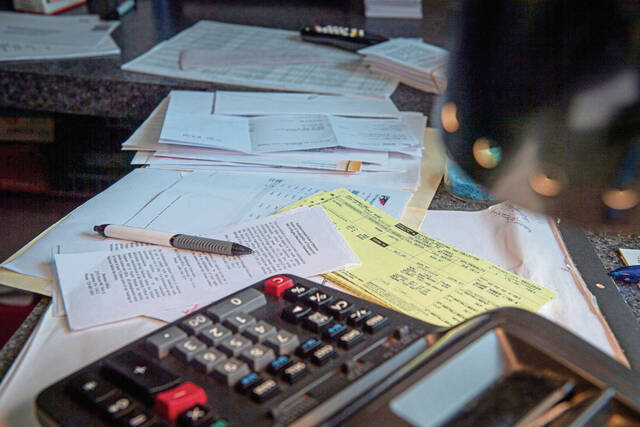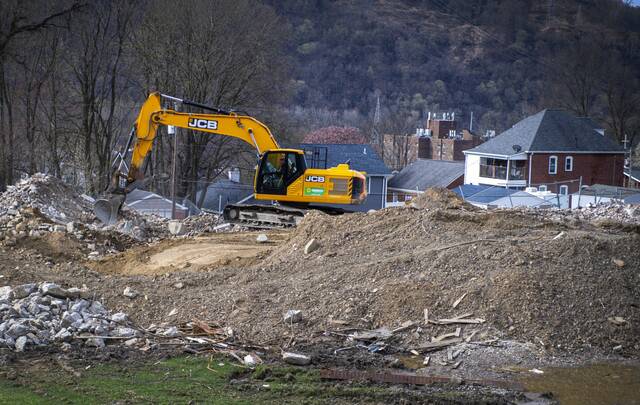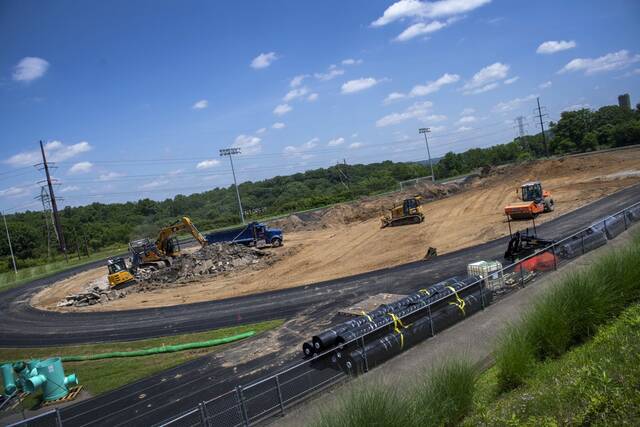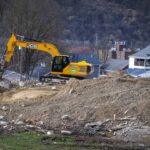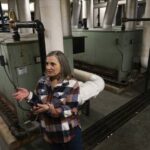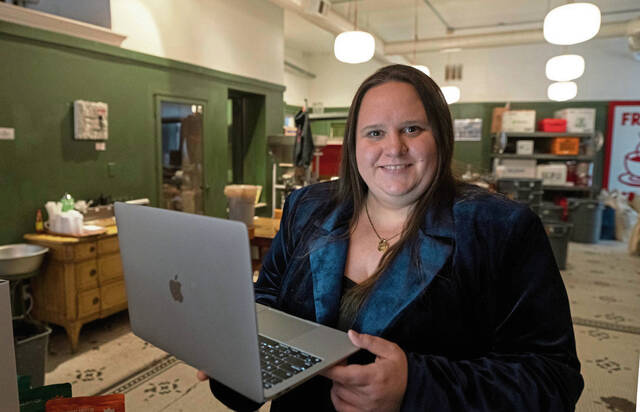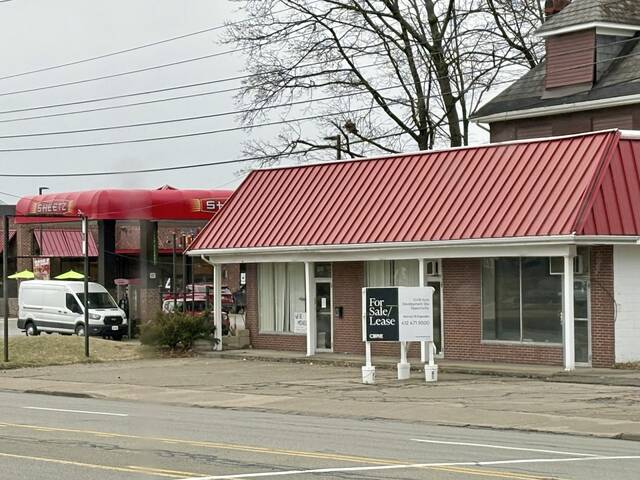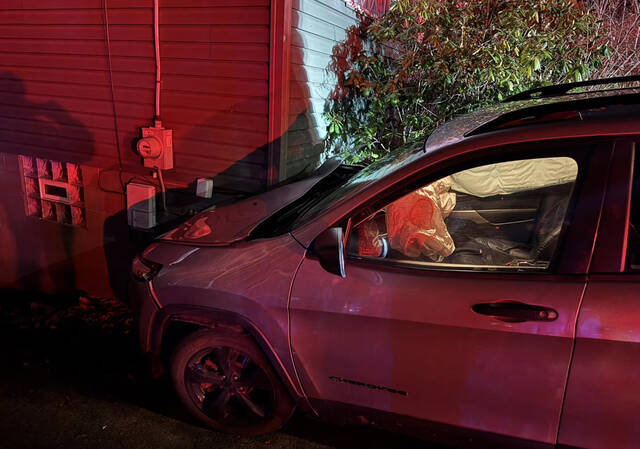If you’re one of the Western Pennsylvania residents smarting over a looming school tax increase this year, you’re not alone.
All but four school districts in Westmoreland County will enact higher taxes this fall, and 6 in 10 districts in Allegheny County will do the same — including all but two in the Alle-Kiski Valley.
Many observers, from district business managers and school board members to state Sen. Wayne Fontana, blame a system that relies on unequal property tax assessments in which counties — not the state — decide when to reassess. Others say the problem is multifaceted, specifically pointing to underfunding by the state.
Leigh Patel, professor of educational foundations, organizations and policy at the University of Pittsburgh, said Pennsylvania’s situation isn’t drastically different from other states. But it does have “more entrenched inequity” in large part because of unequal distribution of resources across districts.
“Pennsylvania has the reputation of having one of the most inequitable education systems in the nation,” she said.
Patel said she believes it’s worthwhile to reinvestigate property tax as a single funding source for public education in Pennsylvania. Whether branching out to include sales tax, not relying on one tax formula for everyone or waiting on improved state and federal funding policy, Patel said reform is necessary.
“We don’t have to be singularly funded or minded,” she said.
Assessments at the core
Property taxes are the largest local funding source for the state’s 500 public school districts and the lion’s share of property tax bills for homeowners.
Yet, Pennsylvania remains the only state in the country that doesn’t require regular property reassessments.
The current system means counties can have wildly different assessed values for similar properties because some haven’t been reassessed in decades.
Allegheny County, with its most recent reassessment in 2013, is one of the more up-to-date counties in the region. Armstrong County reassessed in 1997.
Butler and Westmoreland counties haven’t reassessed since 1969 and 1972, respectively.
For Fontana, a proposed bill requiring counties to schedule a reassessment every five years, as opposed to the current ad hoc system that leaves it up to counties, “isn’t complicated.”
“The biggest reason (for the lack of change) is the fear of not getting reelected or being thrown out of office for voting for a scheduled reassessment,” said Fontana, D-Brookline, referring to a fear of voter backlash.
Ira Weiss is a well-known Pittsburgh-area attorney who has handled reassessment cases for 40 years and represents clients who advocate for fair property assessments. He said Pennsylvania’s assessment system is “archaic.”
Watching each county and school district struggle each year is akin to “watching the same movie over and over. It ends the same way,” he said.
He chalks up the issue to two main factors: The first is rising school costs, including labor costs, especially the funding of pensions. The second is what he calls a broken property tax assessment system.
Weiss sees two ways out.
The first is a short-term solution — a countywide reassessment. The second is a long-term fix — a state law requiring periodic reassessments.
Ohio requires a property reappraisal every six years, according to the Ohio Department of Taxation.
“And guess what?” Weiss said. “They don’t have the reassessment problem.”
Weiss said it’s simple.
“If you don’t adjust assessments to reflect market value, properties worth more are underassessed, and properties worth less are overassessed,” he said.
But reassessments aren’t a cure-all.
Rob Moore, principal for Scioto Analysis, an economic organization that provides evidence-based analysis in Ohio, said that without mandatory reassessments, the cost of running school districts would go up over time to accommodate things like new technology or field trips.
However, there has been a larger conversation happening in Ohio about property tax increases, so the state legislature has begun looking at ways reduce reliance on them.
Sylvia Allegretto, senior economist at the Center for Economic and Policy Research in Washington, D.C., has dedicated her career to studying teacher pay, inequality and economic security. A native of Ridgeway in Elk County, she knows the challenges directly.
“I come from rural Pennsylvania, where the population is half of what it was when I was there as a kid,” she said. “No new buildings. So those homes, like my home that my father has lived in for over 60 years, even if they assess them, the values aren’t going up, they’re going down.”
Because of a shrinking population, tax base and assessment values, the share of all taxes going to public education is shrinking.
“You have a couple things shrinking at the same time,” she said. “That’s not a good situation.”
Allegretto said she believes the best solution is increased federal aid and ensuring large corporations pay their fair share of taxes.
“We’re having this problem with tax money, and everyone’s suffering to fund public schools because rich people and corporations are not paying what they should,” she said.
School districts across the nation, even within the same county, are funded in “thousands of different ways,” Allegretto said.
“There’s nothing uniform in the country about funding schools,” she said.
Jennifer Hoff, a board member of the William Penn School District in Delaware County, participated in a recent livestream conference on public education funding in Pennsylvania. She said that property reassessments didn’t solve her district’s budgetary concerns.
Delaware County underwent a property reassessment based on July 2019 market values, and the results were implemented for the 2021 tax year.
“It’s a double-edged sword,” she said. “Yes, (the value of) a mill went up, but that gets bundled up with tax bills. People think we benefit from a reassessment. Yes, in small dollars, yes, but in a taxing way, it’s harder.”
The impact of countywide reassessments are generally “revenue neutral,” said Ryan Kirsch, Norwin School District’s business affairs director. The primary goal is to redistribute the property tax burden more equitably based on current property values.
Under state law, when a reassessment occurs, taxing bodies must adjust their tax millage rates downward to prevent a tax windfall for the taxing bodies and large tax increases for property owners.
The state’s role
According to Hoff, the greater issue is inadequate state funding.
“The courts say (my school district) is underfunded by $28 million a year,” she said.
On Feb. 7, 2023, Commonwealth Court Judge Renée Cohn Jubelirer ruled that Pennsylvania’s school funding system is unconstitutional and must be reformed.
In a 786-page decision, the court found, “All witnesses agree that every child can learn. It is now the obligation of the Legislature, executive branch, and educators, to make the constitutional promise a reality in this commonwealth.”
The case, William Penn School District v. Pennsylvania Department of Education, was filed in 2014 by six Pennsylvania school districts (William Penn, Greater Johnstown, Lancaster, Panther Valley, Shenandoah Valley and Wilkes-Barre Area), the Pennsylvania Association of Rural and Small Schools, the NAACP-PA State Conference and a group of public school parents.
Many school districts, however, still are waiting to feel the effects of this legal decision.
In response to school district superintendents claiming the proposed 2025-26 budget increase for education still isn’t enough to support their district’s basic needs, Erin James, press secretary for state Department of Education, told TribLive via email the governor has made monumental gains in public school funding.
“Since taking office, Governor Shapiro has secured over $2 billion in additional funding for public schools — the largest investment in Pennsylvania history — and brought lawmakers on both sides of the aisle and in both chambers of the General Assembly together to implement a new funding formula to ensure that every student, in every ZIP code, has access to a high-quality public education,” she said.
The 2025-26 budget includes another $526 million investment through an adequacy funding formula, on top of a $75 million increase to basic education funding, a $40 million increase to special education funding and additional funding for school safety and environmental repairs, school mental health, career and technical education, James said.
“The Shapiro administration is laser-focused on meeting the needs of our commonwealth’s students and solving the problems they face – from bringing more mental health counselors into our schools to repairing school infrastructure to ensuring every student has the freedom to start the school day with a full stomach, ready to learn,” James said.
Mackenzie Christ, director of marketing and communications for the Pennsylvania School Boards Association, said widespread tax increases across the state this year are caused by systemic underfunding of public education at the state level.
A common misconception is that state government is required to provide half of the money for public education in the state, with some even pointing to the state’s constitution as making such a requirement.
It doesn’t.
Article III, Section 14 of the state constitution says only: “The General Assembly shall provide for the maintenance and support of a thorough and efficient system of public education to serve the needs of the Commonwealth.”
No mention is made of any specific funding level requirement, according to a Pennsylvania Bar Association analysis performed for the state Public Education Committee.
According to the Education Law Center, the state Legislature enacted laws in the 1830s — when the state’s education system was created — that capped the state’s contribution to one-third of the cost of public education, but by the 1960s that share had risen to 50%.
Then, in the 1980s, the law was amended to remove any specific funding level requirement. As a result, the state’s share peaked in 1974 at 55%, according to the Law Center. Since then, it has fallen back to about one-third of the costs.
“When the state fails to adequately fund our public schools, the burden shifts to local communities,” Christ said in an email.
And shift it has. This has been a banner year for school tax increases.
In the Alle-Kiski Valley’s 12 school districts, only Highlands and Deer Lakes didn’t raise taxes for the upcoming 2025-26 school year.
In Westmoreland County’s 16 school districts, only four — Belle Vernon Area, Derry Area, Ligonier Valley and Monessen — didn’t raise taxes for this coming school year.
Allegheny County was more of a mixed bag, with 25 of its 42 districts raising taxes for this coming school year.
Kiski Area School Board approved a 3.3% tax increase, according to the school district’s 2025-26 budget. At Norwin School District, a split school board raised taxes by 5.1% for the 2025-26 school year, which helped to cover a projected deficit of about $2.1 million in a $95.48 million budget.
At Greensburg Salem, property owners will see a 2.7% tax hike for the 2025-26 school year to balance a $53 million budget, while the Hempfield Area School Board raised taxes about 4.8% for the new school year.
Last month, the Freeport Area School Board approved a 4.9% tax increase for Buffalo Township residents and a 5.3% increase for Freeport and South Buffalo residents to help with a $55 million high school renovation project, as reported by TribLive.
In May, the Plum School Board unanimously approved a 2.26% tax increase, which resulted from board discussions favoring smaller incremental tax hikes rather than large tax jumps. Allegheny Valley passed a similar tax increase of 2% the same month, TribLive reported, and Fox Chapel Area voted for a 2.3% tax hike resulting in no cuts to programs or services for the district in June.
Jeffrey McVey, New Kensington-Arnold School District’s business manager, bemoaned the lack of state and federal funding and the high cost of special education resources.
“Special education costs are increasing, but the funding from the commonwealth of Pennsylvania has not kept up with that, either,” McVey said. “The state considers funding at 16%, but our special education population is 26%. There’s a 10% deficit in funding costs right there.”
Norwin’s Kirsch said as special education costs continue to climb, so do operational costs like electricity, natural gas and other utilities. Maintaining aging facilities is driving up repair and maintenance costs, placing additional pressure on school budgets.
That leaves little money for construction or renovations needed at many local schools, forcing districts to borrow money that usually is repaid via tax increases.
Anna Mares, Megan Trotter and Joe Napsha are TribLive staff writers.


